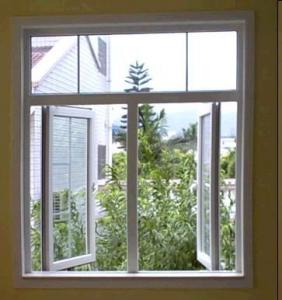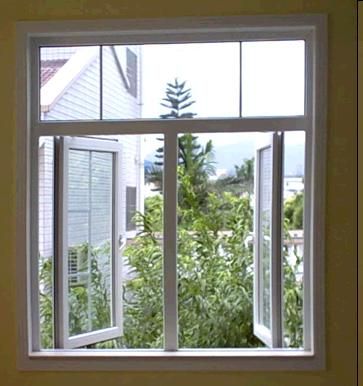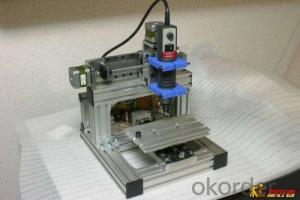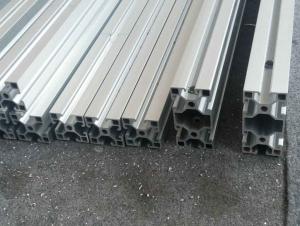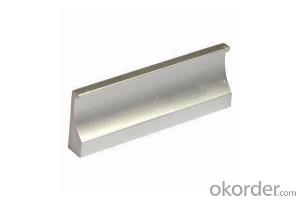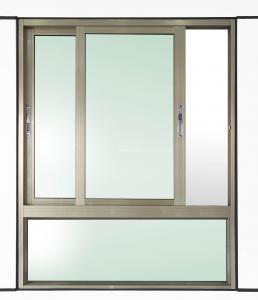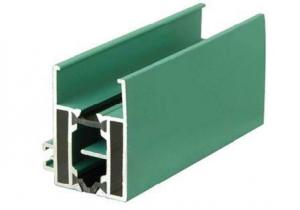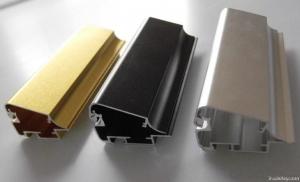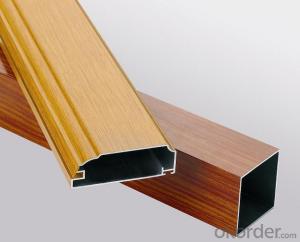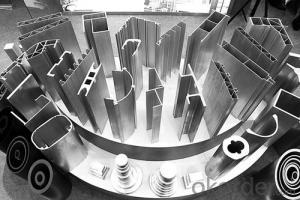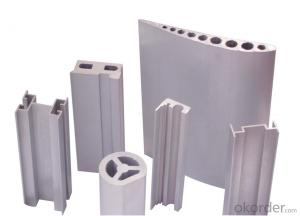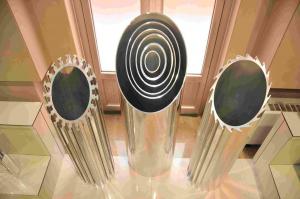Aluminum Extrusion Profiles - Aluminium Casement Window AA6063
- Loading Port:
- China Main Port
- Payment Terms:
- TT OR LC
- Min Order Qty:
- -
- Supply Capability:
- -
OKorder Service Pledge
OKorder Financial Service
You Might Also Like
Aluminum Casement Window Description
1) Aluminum window
2) Heat insulating window
3) Double glass or signle glass
Information:
1)Material : 6063 6061 6060 and different aluminium alloy
2)Status:T4 T5 T6 or other special status
3)Surface treatment: mill finish, anodized sliver ,anodized bronze, anodized champagne, anodized black pearl, various power coating color, electrostatic sliver, electrostatic champagne, electrostatic golden, electrostatic titanium , machine polish sliver, machine polish bronze, wooden grain color, and Fluorocarbon spraying.
4)Annual capacity : 120000TON
5)Quality : China Nation Standard GB/T 5237 2004 (advanced class)
6)Use: can be widely using aluminium window, door, curtain wall, hand railing , normal aluminium profile, decorative and industrial aluminium profile
7)Advantage: Famous Brand reasonable&market price, soonest delivery and good after sale- service
- Q: What is the material content of 4040 aluminum alloy profiles?
- 40*40 aluminum profile, commonly known as industrial aluminum, aluminum assembly line, table, aluminum profiles. The material content of silicon (Si) 0.2-0.6% (Fe) 0.35%, iron and copper (Cu) 0.1% (Mn 0.1%), manganese and magnesium (Mg), 0.45-0.9% (Cr) 0.1% chromium and zinc (Zn) 0.1%, titanium (Ti) 0.1%, other metals accounted for the total proportion of 0.15%, aluminum (Al 97.35--98.35%).
- Q: Are aluminum profiles suitable for protective enclosures?
- Yes, aluminum profiles are suitable for protective enclosures. Aluminum is a lightweight yet strong and durable material, making it ideal for constructing protective enclosures. It offers excellent resistance to corrosion, UV rays, and extreme weather conditions, making it suitable for both indoor and outdoor applications. Aluminum profiles can be easily customized and fabricated to meet specific enclosure requirements, such as size, shape, and design. Additionally, aluminum is a non-magnetic material, which can be advantageous in certain applications where magnetic interference needs to be minimized. Overall, aluminum profiles provide a reliable and cost-effective solution for building protective enclosures in various industries, including electronics, telecommunications, automotive, and more.
- Q: What are the different surface brushing options for aluminum profiles?
- There are several surface brushing options available for aluminum profiles, each offering unique aesthetics and functional characteristics. 1. Mechanical Brushing: This method involves using abrasive brushes or pads to create a uniform brushed pattern on the surface of the aluminum profile. It provides a consistent, linear finish that enhances the visual appeal of the material. Mechanical brushing also helps to hide minor surface imperfections and scratches, making it a popular choice for decorative applications. 2. Chemical Brushing: Chemical brushing, also known as chemical etching, involves applying a chemical solution to the surface of the aluminum profile. The solution selectively removes a thin layer of metal, creating a brushed effect. This process can be controlled to achieve different levels of brush intensity, giving manufacturers flexibility in creating the desired appearance. Chemical brushing is often used to create a matte or satin finish on aluminum profiles. 3. Sandblasting: Sandblasting is a surface treatment technique that involves propelling fine particles at high speeds onto the aluminum profile's surface. The abrasive particles remove the outer layer of the metal, resulting in a textured, brushed finish. Sandblasting can be adjusted to achieve different levels of roughness and depth, making it suitable for various applications. 4. Wire Brushing: Wire brushing is a manual technique where a wire brush is used to create a brushed pattern on the aluminum profile's surface. This method allows for precise control over the brushing direction and intensity, making it suitable for customized designs. Wire brushing can create both light and heavy brushed finishes, depending on the pressure applied and the type of brush used. 5. Anodizing: Anodizing is an electrochemical process that involves creating an oxide layer on the surface of the aluminum profile. This process not only enhances the material's corrosion resistance but also allows for the application of various decorative finishes, including brushed patterns. Anodized aluminum profiles can be mechanically brushed or chemically etched to achieve the desired brushed effect before the anodizing process. Overall, the choice of surface brushing option for aluminum profiles depends on the desired finish, functionality, and specific application requirements. Manufacturers often consider factors such as aesthetic appeal, durability, corrosion resistance, and ease of maintenance when selecting the appropriate surface brushing technique.
- Q: What are the thermal properties of aluminum profiles?
- Aluminum profiles have excellent thermal properties. They have high thermal conductivity, allowing heat to be transferred quickly and efficiently. They also have a low coefficient of thermal expansion, meaning they can withstand temperature changes without significant distortion or damage. Additionally, aluminum profiles have good heat dissipation capabilities, making them suitable for applications requiring heat management, such as in electronic devices or heat sinks.
- Q: This question asks for the proper and safe method of installing aluminum profiles, which are commonly used in construction and manufacturing.
- <p>To install aluminum profiles correctly and safely, follow these steps: 1. Plan the layout and measure the required lengths accurately. 2. Use appropriate cutting tools to cut the profiles to size, ensuring a clean edge. 3. Apply protective gloves and eyewear when handling aluminum profiles to avoid injury. 4. Use the correct fasteners, such as screws or bolts, compatible with the aluminum profiles. 5. Ensure the profiles are securely fastened and aligned properly. 6. Check for any sharp edges or burrs after installation and smooth them out to prevent injury. 7. Always follow the manufacturer's guidelines and safety precautions. Proper installation and safety measures will ensure the longevity and stability of the aluminum profiles.</p>
- Q: Is it possible to use aluminum profiles as materials for flooring?
- <p>Aluminum profiles can indeed be used for flooring materials, particularly in industrial or commercial settings. They are valued for their strength, durability, and resistance to corrosion. Aluminum profiles are often used in modular flooring systems, providing a stable and customizable base that can be easily adjusted or reconfigured. They are also appreciated for their lightweight nature, which can reduce the load on structures and facilitate installation. However, for residential applications, traditional flooring materials like wood, tile, or carpet are more common due to aesthetic and comfort considerations.</p>
- Q: Can aluminum profiles be used in solar mounting systems?
- Yes, aluminum profiles can be used in solar mounting systems. Aluminum is a popular material choice for solar mounting systems due to its lightweight, corrosion resistance, and strength properties. It provides a durable and cost-effective solution for securely mounting solar panels onto various surfaces.
- Q: Is it possible to use aluminum profiles for outdoor applications like fences and railings?
- <p>Yes, aluminum profiles are commonly used for outdoor applications such as fences and railings. They are favored for their resistance to corrosion, lightweight properties, and durability. Aluminum can withstand harsh weather conditions without rusting, making it an ideal material for outdoor use. Additionally, it is low maintenance, as it does not require painting or frequent repairs. The profiles can be powder-coated or anodized for enhanced protection and aesthetic appeal.</p>
- Q: Can aluminum profiles be used for exhibition booths?
- Yes, aluminum profiles can be used for exhibition booths. Aluminum profiles are lightweight, durable, and easy to assemble, making them a popular choice for constructing exhibition booths. They can be easily customized to fit specific design requirements and can be used to create walls, frames, and structures for displaying products and promotional materials. Additionally, aluminum profiles can be easily transported and stored, making them a practical choice for exhibition booths that need to be set up and dismantled multiple times. Overall, aluminum profiles offer versatility and convenience in creating visually appealing and functional exhibition booths.
- Q: What's the difference between aluminum oxide and electrophoresis?
- Main features: 1 aluminum oxide) has strong abrasion resistance, weatherability and corrosion resistance. 2) can form a variety of colors on the surface of the substrate, the maximum for your requirements. 3) hardness, making it suitable for all kinds of buildings, industrial materials.Main features: 1 electrophoresis aluminum) has strong film hardness and strong impact resistance. 2) has very high adhesion of film, aging is not easy to fall off. 3) has better wear resistance, weather resistance and alkali resistance than aluminum oxide. 4) surface color is rich, beautiful, with a mirror like luster effect.Aluminum electrophoresis processing in oxidized aluminum on the basis of better quality than the oxidized aluminum chip. The price is a little better.
Send your message to us
Aluminum Extrusion Profiles - Aluminium Casement Window AA6063
- Loading Port:
- China Main Port
- Payment Terms:
- TT OR LC
- Min Order Qty:
- -
- Supply Capability:
- -
OKorder Service Pledge
OKorder Financial Service
Similar products
Hot products
Hot Searches
Related keywords
